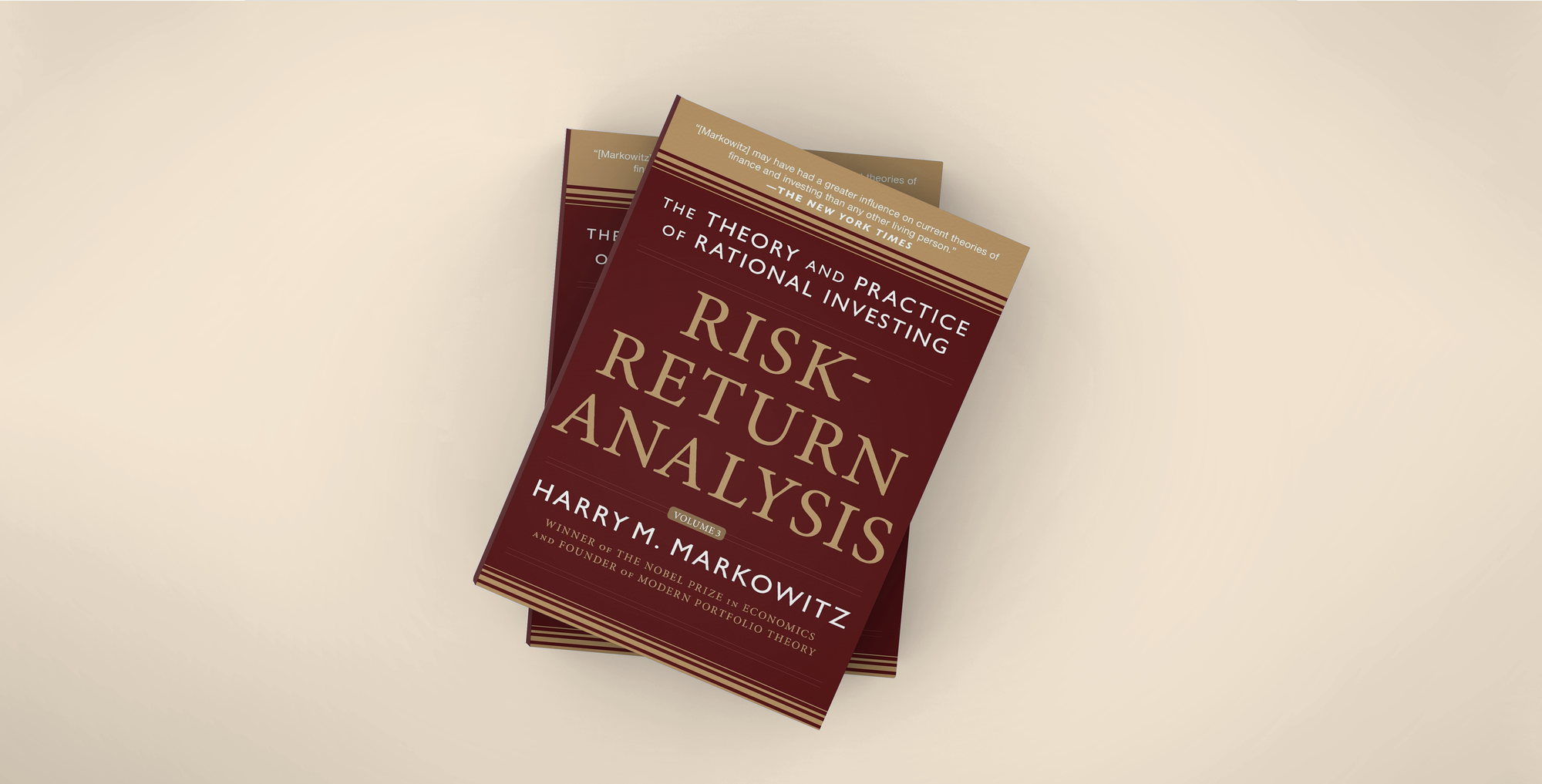| INTRODUCTION
Family offices differ significantly from institutional investors, ultra-high-net-worth individuals (UHNWIs), or other wealthy investors. Unlike these groups, family offices often have direct investments in companies they own or partially own, alongside holdings in liquid and illiquid assets, including public equities, fixed income, real estate, private equity, and venture capital.
Because of this unique structure, traditional asset allocation models designed to optimize diversification and risk-adjusted returns do not fully apply as-is. Measuring risk and return across direct investments, illiquid assets, and market-traded securities presents significant complexity.
We believe diversification is critical for family offices focused on long-term capital preservation. Despite the flexibility to take risks without the pressure of short-term performance, an unclear understanding of portfolio risk and diversification can lead to suboptimal decisions. This article explores strategies for achieving meaningful diversification and suggests that family offices consider incorporating an appropriate allocation of market-neutral investments to their portfolio. Combining academic research on portfolio management with practical applications and implementation is a key element in achieving proper diversification.
| DIVERSIFICATION
Foundational models such as Modern Portfolio Theory (MPT), the Capital Asset Pricing Model (CAPM), and Arbitrage Pricing Theory (APT) can be used to inform our strategies for designing investments that achieve diversification. These three models highlight the important factors and the relationships among them.
I. MPT
According to Markowitz, investors should select financial assets such as stocks and bonds for their portfolios based on each asset’s contribution to the portfolio’s overall mean and variance. Thus, we must consider the risk of a single investment not in terms of its variance but its interaction with other assets in the portfolio.
Through the power of portfolio diversification, investors can reduce the risk that is specific to an individual stock at virtually no cost. While it is true that the mitigation of risk may also lead to the lowering of expected profits, if assets are selected carefully, then diversification can allow investors to achieve a higher rate of return for a given level of risk. To the extent that investors succeed in achieving this state, they arrive at an efficient frontier.
II. CAPM
Building upon Harry Markowitz’s foundational work on portfolio selection, economists Sharpe and Lintner advanced the field by introducing the Capital Asset Pricing Model (CAPM). This model offers a framework to determine the expected return of an asset based on its systematic risk, as measured by beta (ß).
The first key component of CAPM is risk decomposition. This involves understanding two types of risk: diversifiable (specific) risk and non-diversifiable (systematic) risk. Diversifiable risk represents a portion of an asset’s total risk that diversification can mitigate. In contrast, non-diversifiable risk is inherent market risk that diversification cannot eliminate.

Risk-Return Analysis
The man who created investing as we know it provides critical insights, knowledge, and tools for generating steady profits in...
The market portfolio assumption plays a crucial role in portfolio construction, as it provides a framework to balance risk and return. Investors can allocate funds between a risk-free asset and a market portfolio, which comprises all risky assets weighted by their market values. Individual portfolios are tailored based on investors’ risk appetites, allowing them to combine these components in varying proportions.
The market risk premium is another significant element in portfolio construction. This premium reflects the additional return investors expect when choosing a market portfolio over a risk-free asset. It is calculated as the difference between the expected return on the market portfolio and the risk-free rate.

An essential metric in this context is beta, which measures an asset’s sensitivity to market movements. A beta greater than one indicates the asset is more volatile than the market, while a beta less than one signifies lower volatility. From an investor’s perspective, beta represents the portion of an asset’s total risk that cannot be neutralized by diversification in a portfolio of risky assets, and for which some compensation must be demanded. Put another way, investing in higher-beta securities increases risk but also raises the expected future return of the portfolio. The Security Market Line (SML) illustrates this linear relationship between risk and expected return, showing how an asset’s return should align with its beta.
III. Alpha
In portfolio theory, alpha measures an investment's performance relative to a benchmark, such as the S&P 500. It represents the excess return generated after adjusting for risk, typically measured by beta in the CAPM. A positive alpha indicates that the investment outperforms the market on a risk-adjusted basis, suggesting that a portfolio manager has successfully delivered excess returns through effective stock selection, market timing or other strategies.
If the investor achieves a positive alpha, that is good news. However, suppose funds A and B have high factor exposures to the same risks, their alphas will likely be correlated causing their excess returns to rise and fall together, which reduces diversification benefits. To maximize risk-adjusted returns, investors should construct portfolios with diversification in mind, avoiding investments with alphas that are strongly correlated.
For example, let's say you have Fund A and B in your portfolio, both of which are exposed to tech stocks. These funds would likely have correlated alphas. On the other hand, if Fund A is a growth-focused hedge fund that invests in tech stocks, and Fund B is a value-focused fund that holds undervalued industrial and energy stocks, these two funds would likely have uncorrelated alphas. This makes them a better combination for diversification.
Investors should seek uncorrelated alpha sources to create an optimal portfolio. This approach ensures that when one strategy struggles, another can still deliver positive returns, thereby reducing volatility and improving overall risk-adjusted returns.
“Through the power of portfolio diversification, investors can reduce the risk that is specific to an individual stock at virtually no cost. While it is true that the mitigation of risk may also lead to the lowering of expected profits, if assets are selected carefully, then diversification can allow investors to achieve a higher rate of return for a given level of risk”

IV. APT
While CAPM provides valuable insights, it is essential to acknowledge certain assumptions upon which it relies and its limitations. Stephen Ross recognized these limitations and introduced the Arbitrage Pricing Theory (APT) as an alternative. APT posits that an asset’s expected return is influenced by multiple factors, rather than just a single CAPM risk factor. Each factor has a corresponding beta, representing the asset’s sensitivity to that specific factor. Unlike CAPM, APT does not specify the exact factors, which allows for flexibility based on empirical data.
Factor diversification models can help ensure that investments are not overly concentrated in specific characteristics. By utilizing multi-factor models, an investor can analyze the exposure of different funds to various factors. For example, when using a three-factor Fama-French model for explanatory purposes, the factors include: SMB (Small Minus Big), which distinguishes between small-cap and large-cap stocks, HML (High Minus Low), which compares high book-to-market stocks with low book-to-market stocks.
Practical steps can be taken to build portfolios with zero correlations across alpha. These steps include diversifying across asset classes, which is essential for a balanced investment strategy. For example, a portfolio of equities, bonds, and commodities can have effective diversification. Stocks and bonds typically exhibit low correlation, particularly during recessions, making them complementary investments. Commodities such as gold and oil can be effective hedges against inflation and economic uncertainty.
It is also important to include various geographies in your investment portfolio. By incorporating U.S., European, Asian and Emerging Markets assets, an investor can reduce reliance on the economic performance of any single country. Market cycles also vary by region, so maintaining global exposure helps to mitigate risks.

“Investors should seek uncorrelated alpha sources to create an optimal portfolio. This approach ensures that when one strategy struggles, another can still deliver positive returns, thereby reducing volatility and improving overall risk-adjusted returns”
CAPM and APT have significantly shaped financial economics, providing frameworks for assessing the risk and expected return relationship. While CAPM delivers a simplified, single-factor approach, APT offers a multifactor perspective, accommodating a broader range of influences on asset returns.
Understanding these models equips investors and financial managers with the tools to make informed decisions, helping them balance potential returns against associated risks in an ever-evolving market landscape.
| MARKET RISKS FOR FAMILY OFFICES
Alternative investment opportunities—and the asset class’s outperformance—continue to be top of mind for family offices. Ideally family offices should seek alternatives investments that not only generate positive long term returns but that also have low correlation, offering the potential to enhance the risk adjusted returns, provide diversification and reduce volatility within a broader investment portfolio.
Market conditions continually change and the best way to construct a portfolio resilient to changing market regimes is through proper diversification. Allocating to low correlation strategies can help reduce volatility, soften drawdowns of the overall portfolio, and enhance long-term returns. These strategies are meant to complement—rather than compete with traditional investments.
The real benefit of managing a balanced portfolio is finding uncorrelated alpha. This means holding assets that perform under any economic regime conditions with returns that are not correlated with each other or with the rest of the portfolio under any economic conditions. One common error is to find negatively correlated assets because the correlations can change over time, and they tend to become positive in times of market stress. Thus, the objective is to find assets with minimal correlation over market cycles.
A good approach for a family office is to separate a single portfolio into two portfolios—a beta portfolio and an alpha portfolio. This will allow a family office more granular control over the entire combination of alpha and beta risks, and clarity on how to measure risk-adjusted returns vs. benchmarks. Additionally, by individually selecting exposure to beta and alpha, the family office can enhance returns by consistently maintaining desired risk levels within their aggregate portfolio.
“A good approach for a family office is to separate a single portfolio into two portfolios—a beta portfolio and an alpha portfolio. This will allow... more granular control over the entire combination of alpha and beta risks”

| UNCORRELATED ALPHA
U.S. equities have generally delivered strong returns in recent years. 2024 was no exception, with both earnings growth and price/earnings ratios exceeding expectations. The question for investors is, therefore, “What happens next?”, “How do I reduce reliance on the stock market continuing to produce outsized returns”.
Traditional and many alternative investments are highly correlated, meaning they move together with the equity, bond, and commodities markets. When markets rise, that’s great. But when they fall, everything takes a hit, increasing portfolio volatility and risk.
The majority of institutional investors, family offices and ultra-high net worth individuals have over 60% of their portfolio invested in equities (specifically considering direct investment by a family office) and alternative investments. Similarly, many investment advisors favor a ‘balanced portfolio’ for wealth management clients, typically allocating 60% to equities.
Given these generally high weights in equities and considering the numerous market, macroeconomic, and global uncertainties investors face, it is important to remember that equity markets have historically experienced swift and substantial downturns - 18% in 2022, 37% in 2008, and three consecutive years of annual losses for a total of 37% between 2000 and 2003. These market downturns can be challenging, and many investors do not have the time, and sometimes the resilience, to stay the course and benefit from the inevitable recoveries. Perhaps for all investors, given the valuation levels and the extraordinary recent S&P 500 returns (60% from 1/1/23), the more important question is, "How do I invest going forward, so I am not as reliant on the equity market for performance?".
We believe a good approach to mitigating risk after such a sustained market rise is to increase the allocation of assets following a market neutral strategy.
The goal of a market-neutral investment strategy is to preserve portfolio value while delivering sustainable growth that is uncorrelated to the market. This approach is designed to provide smoother, more consistent market returns. We use the term “uncorrelated alpha” to describe our approach. The basic principle is the same as in all portfolio theories; generate excess return in relationship to a benchmark and minimize risk. As mentioned above, alpha measures an investment's performance relative to a benchmark. What does “uncorrelated alpha” mean? The objective is to enhance returns compared to a benchmark while also minimizing risk (the volatility of returns) not just for an individual asset, but more importantly, for the entire portfolio.
“Risk exists because decisions are always based on incomplete information. In general, when there are significant macro-economic and political events investors, asset managers and investment advisors should constantly reassess their portfolio asset allocation”

Risk exists because decisions are always based on incomplete information. In general, when there are significant macro-economic and political events investors, asset managers and investment advisors should constantly reassess their portfolio asset allocation. Many investors choose an Outsourced Chief Investment Officer (OCIO) to perform such assessment as an OCIO can provide an independent review of the asset allocation, recommend changes to portfolio construction and perform due diligence and risk management expertise that it especially critical for alternative assets.
In conclusion, while the US equity market presents both opportunities and risks, we believe that the exceptional returns of the S&P 500 and the inherent inability of calling the market top, make it prudent to take some money off the table to hedge portfolios.
| FINAL THOUGHTS FOR FAMILY OFFICES
Family offices can significantly benefit from a periodic comprehensive understanding of their investments, including their correlation and diversification. Given the current macroeconomic and political landscape, it is crucial for family offices to assess the diversification of their overall portfolios, ensuring that they include all assets, not just liquid ones. Three questions for a family office to consider among others are:
➊ Does our portfolio accurately reflect our medium- and long-term market views? Is it aligned with both these views and the current market environment?
➋ Do we evaluate alpha at the portfolio level, and does this evaluation effectively contribute to reducing overall risk?
➌ Would we benefit from an independent strategic review of our portfolio allocations, particularly for complex asset classes like private equity and hedge funds?
In conclusion, combining academic research on portfolio management with practical applications and implementations is a key element in achieving diversification - especially in the current market we are facing.

Bob Mark
Advisory Board Member, Actium Capital Management.
blackdiamondrisk.com

David X. Martin
CEO and CIO, Arctium Capital Management.
arctiumcapital.com

Enrico Dallavecchia
President and COO, Arctium Capital Management.
arctiumcapital.com




